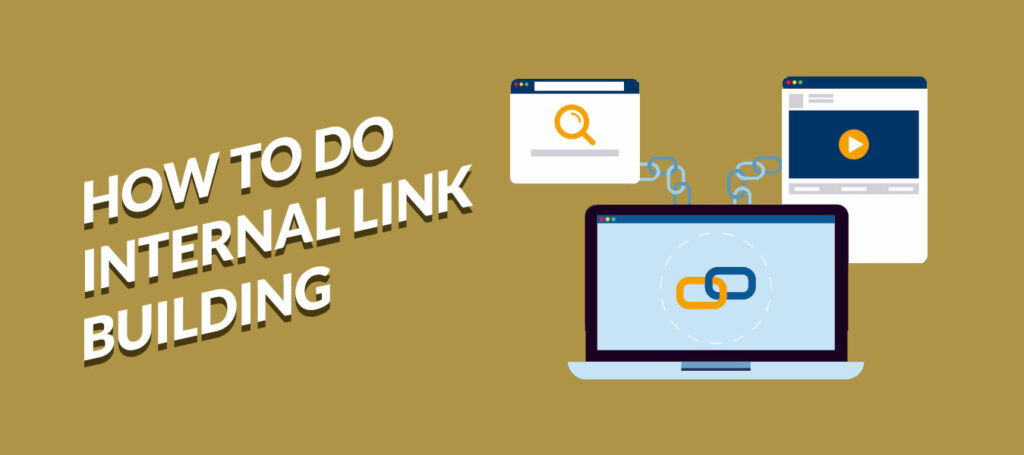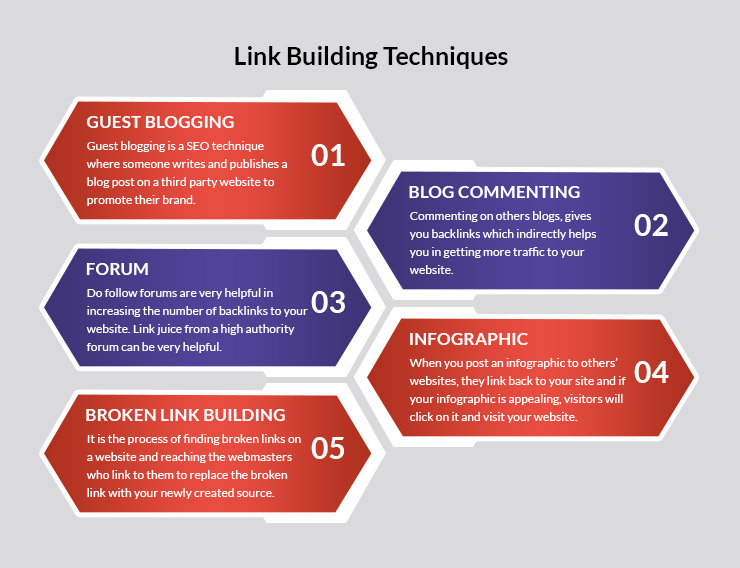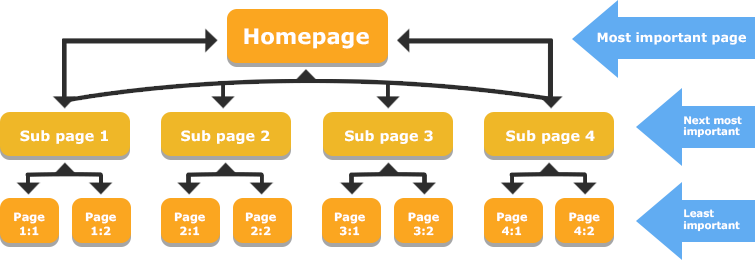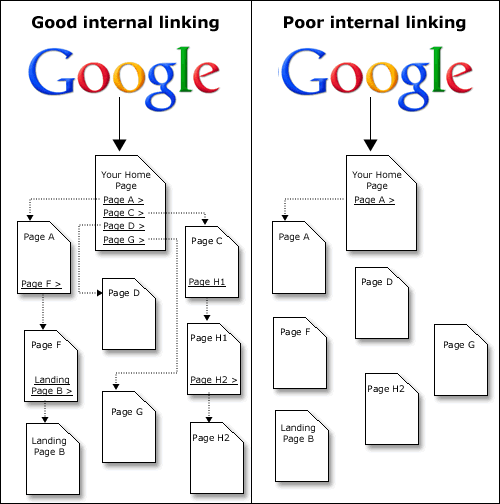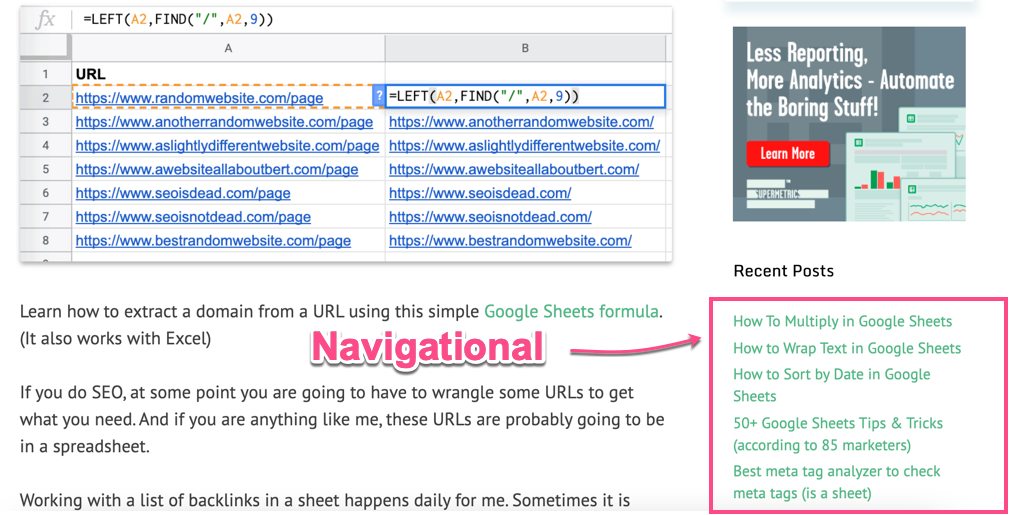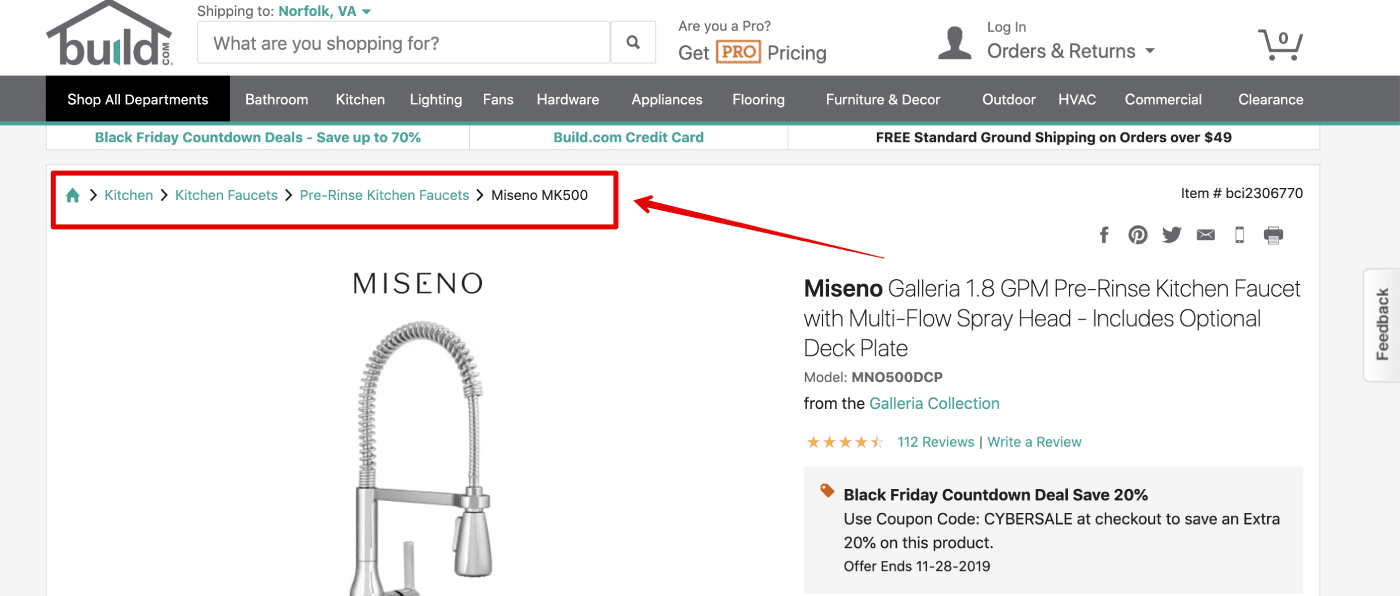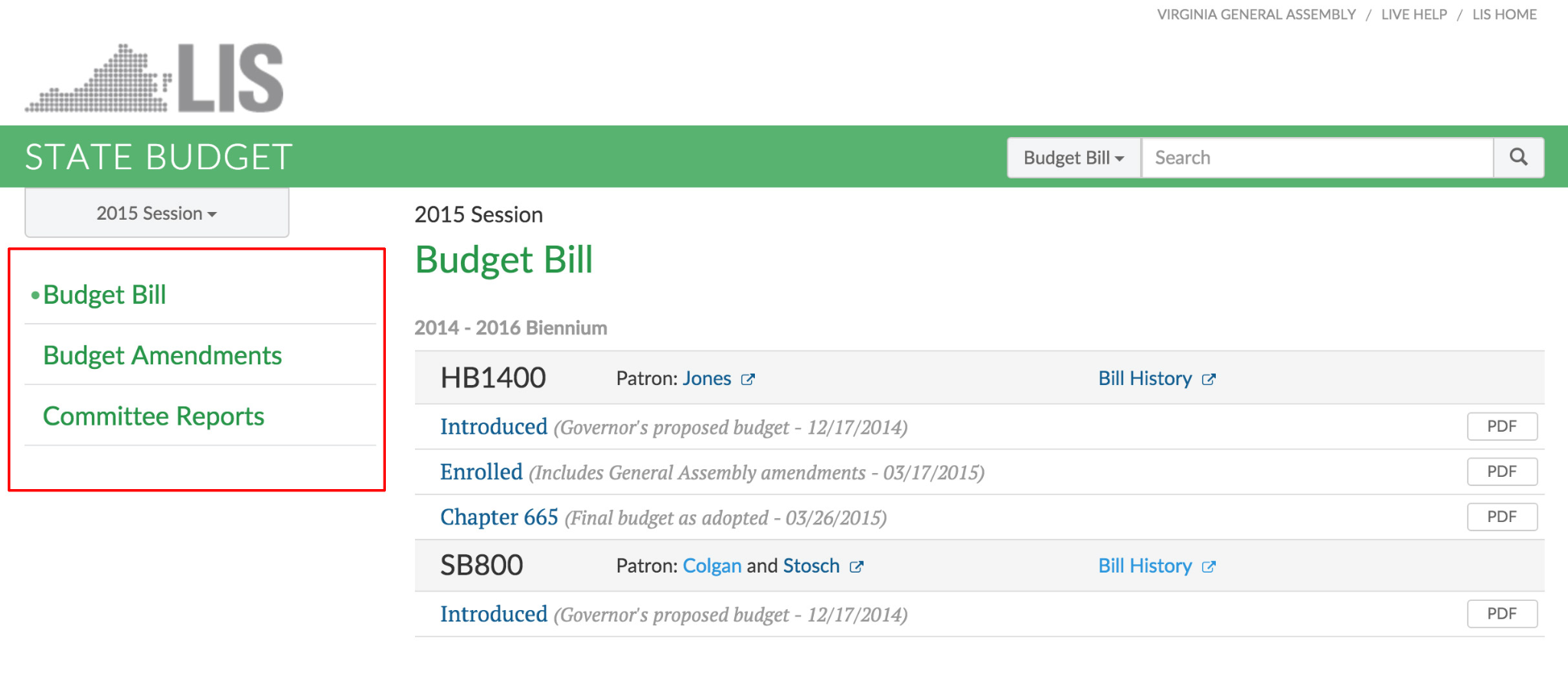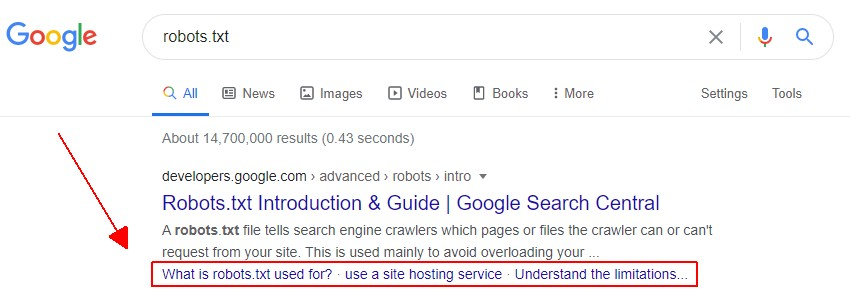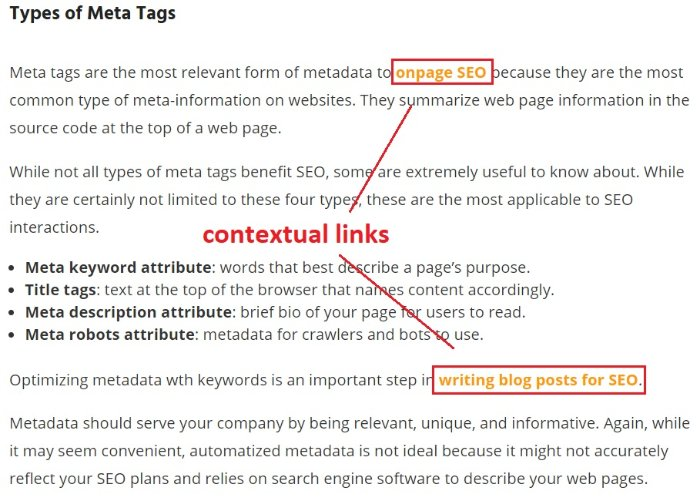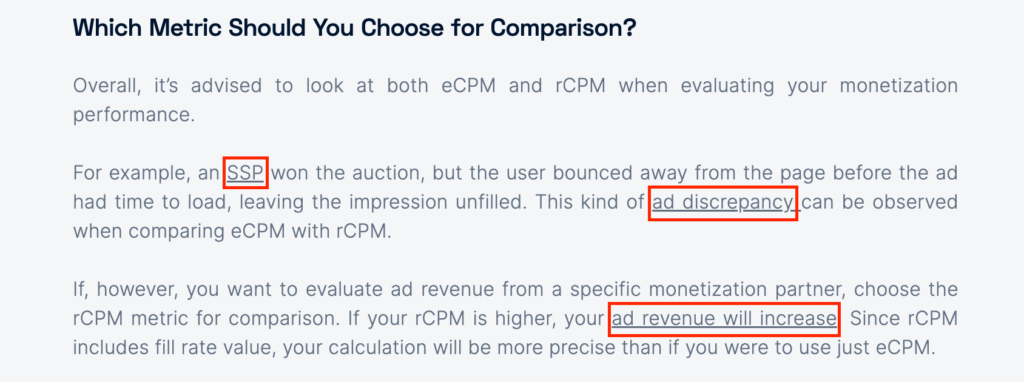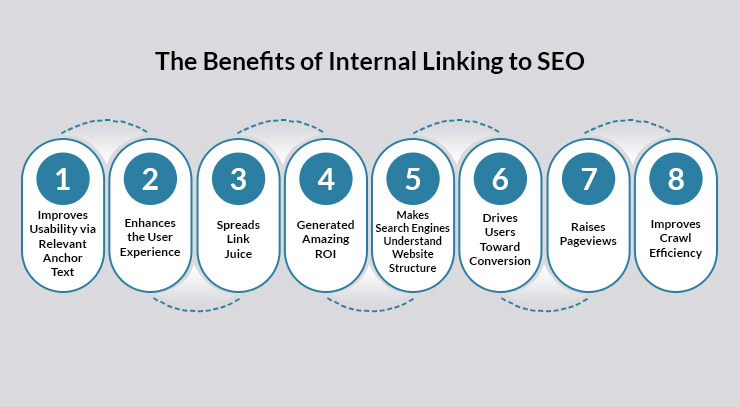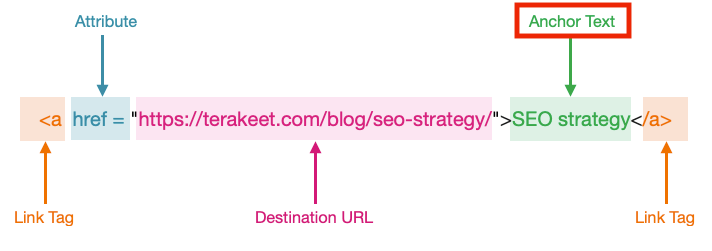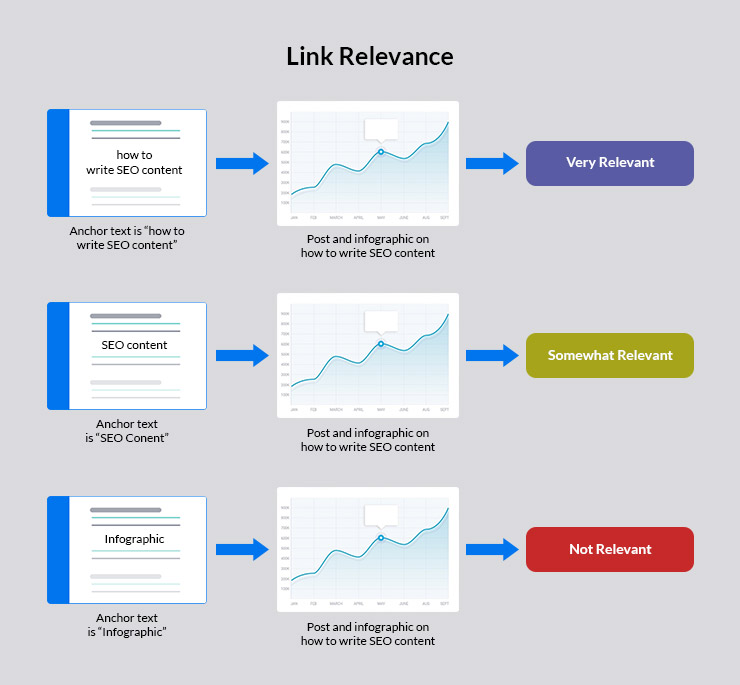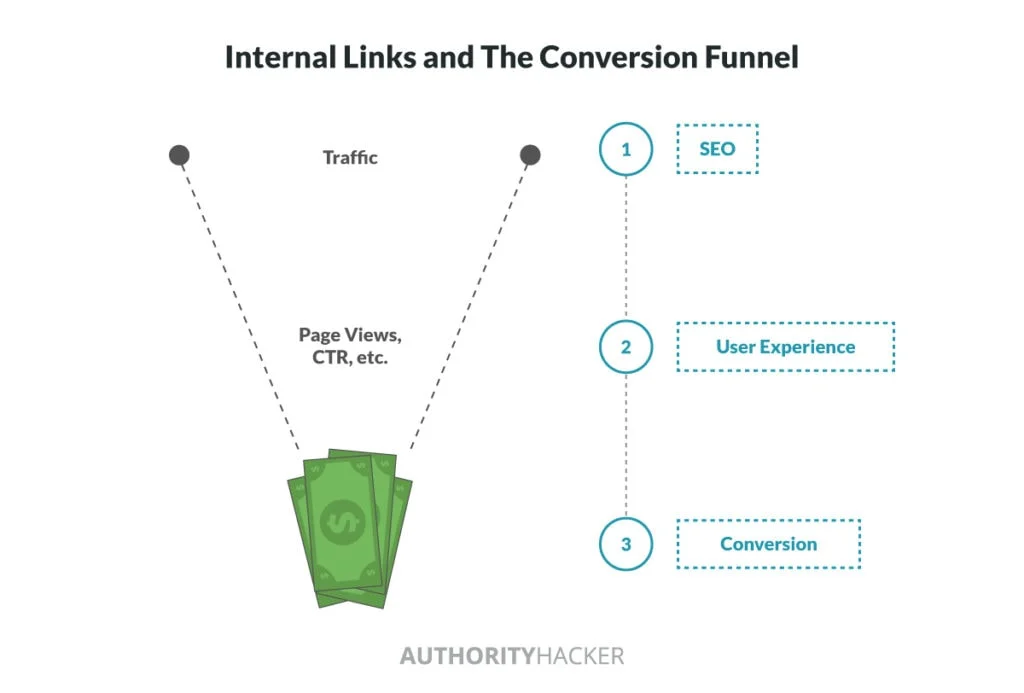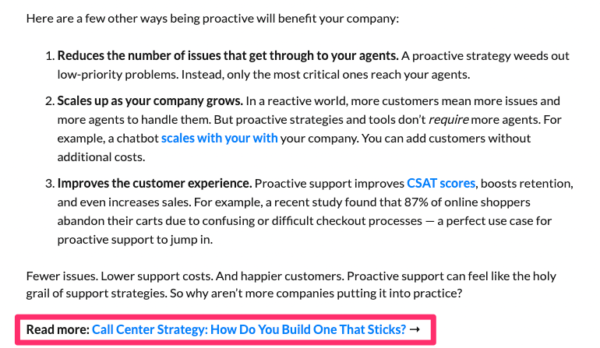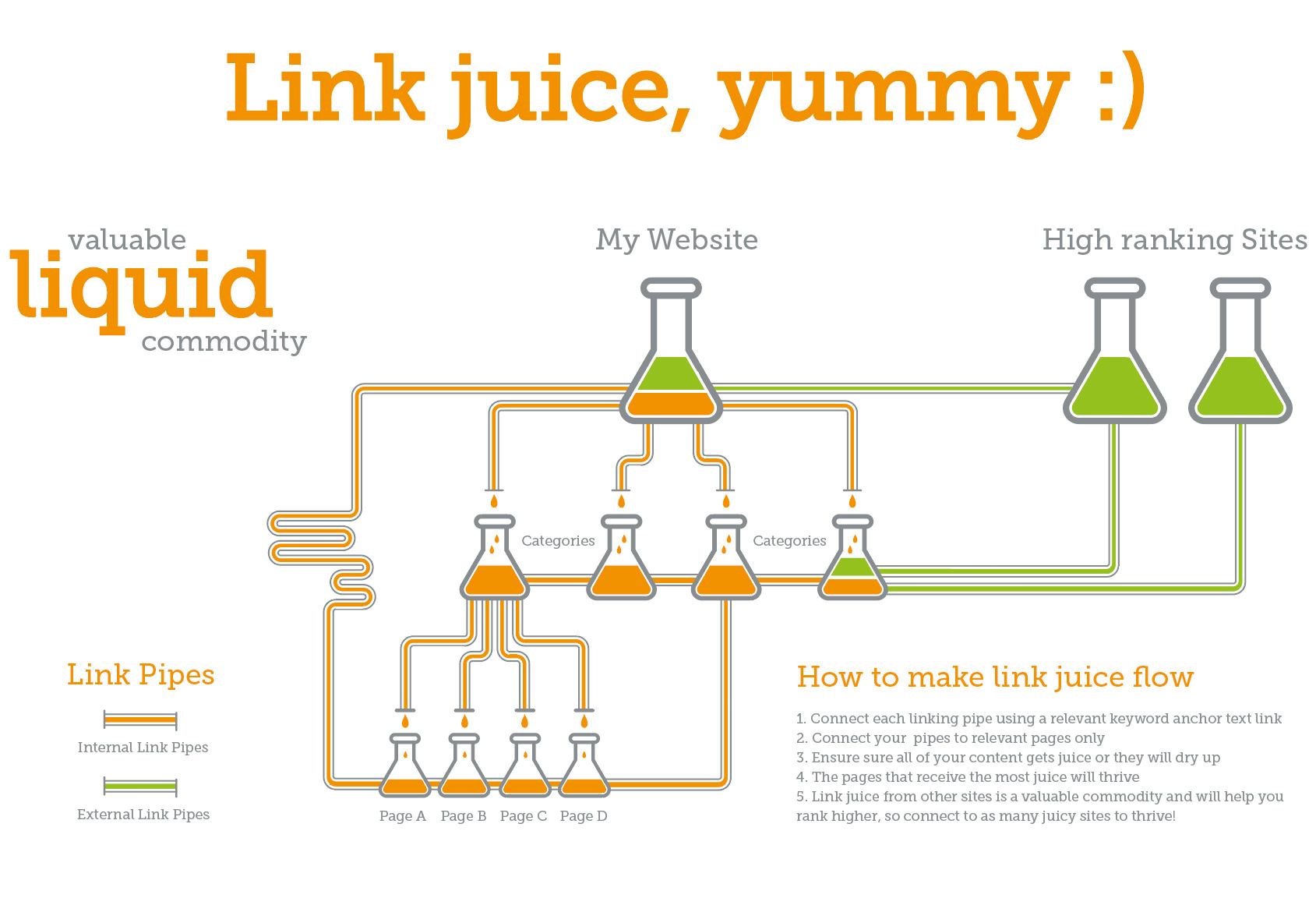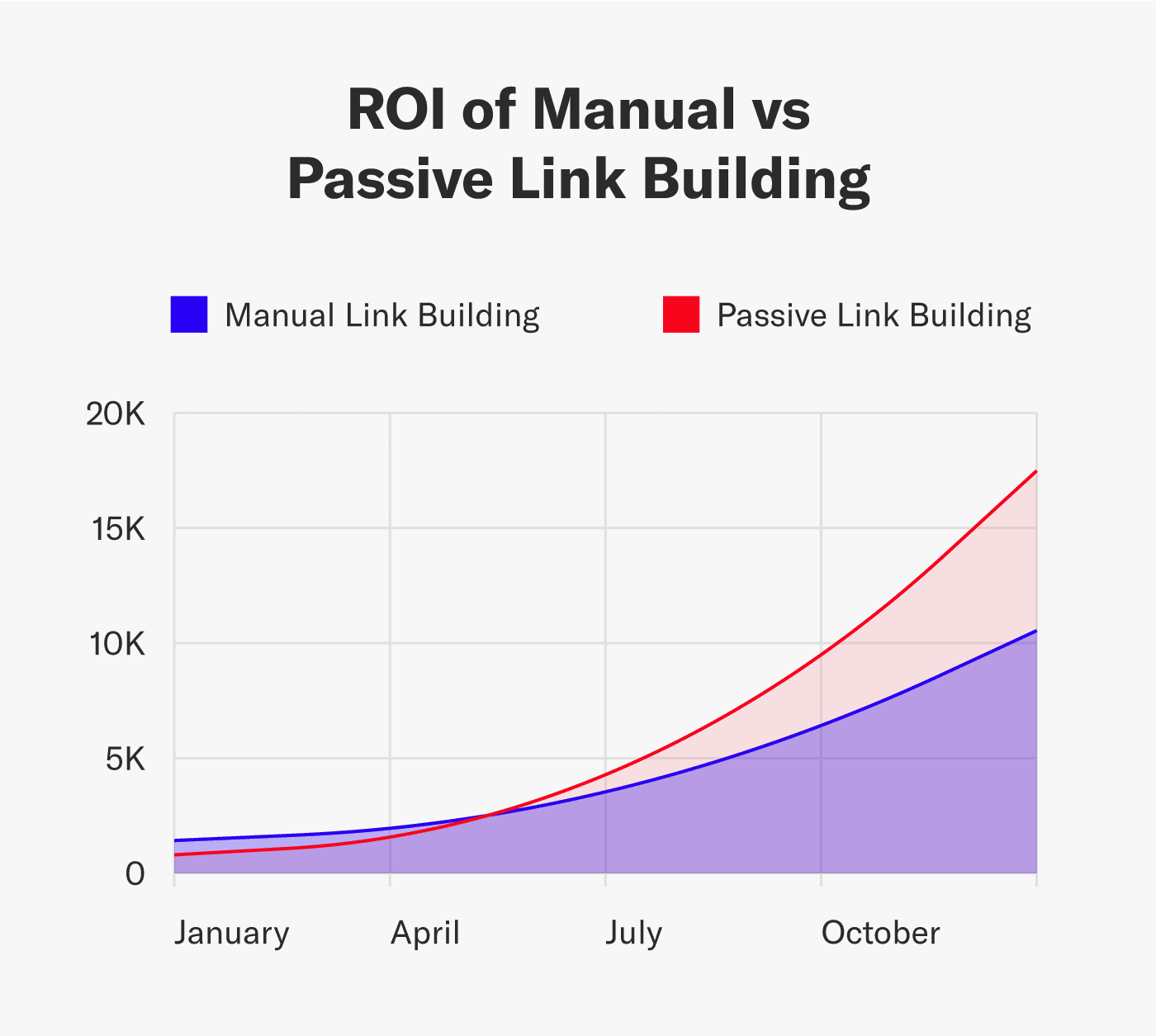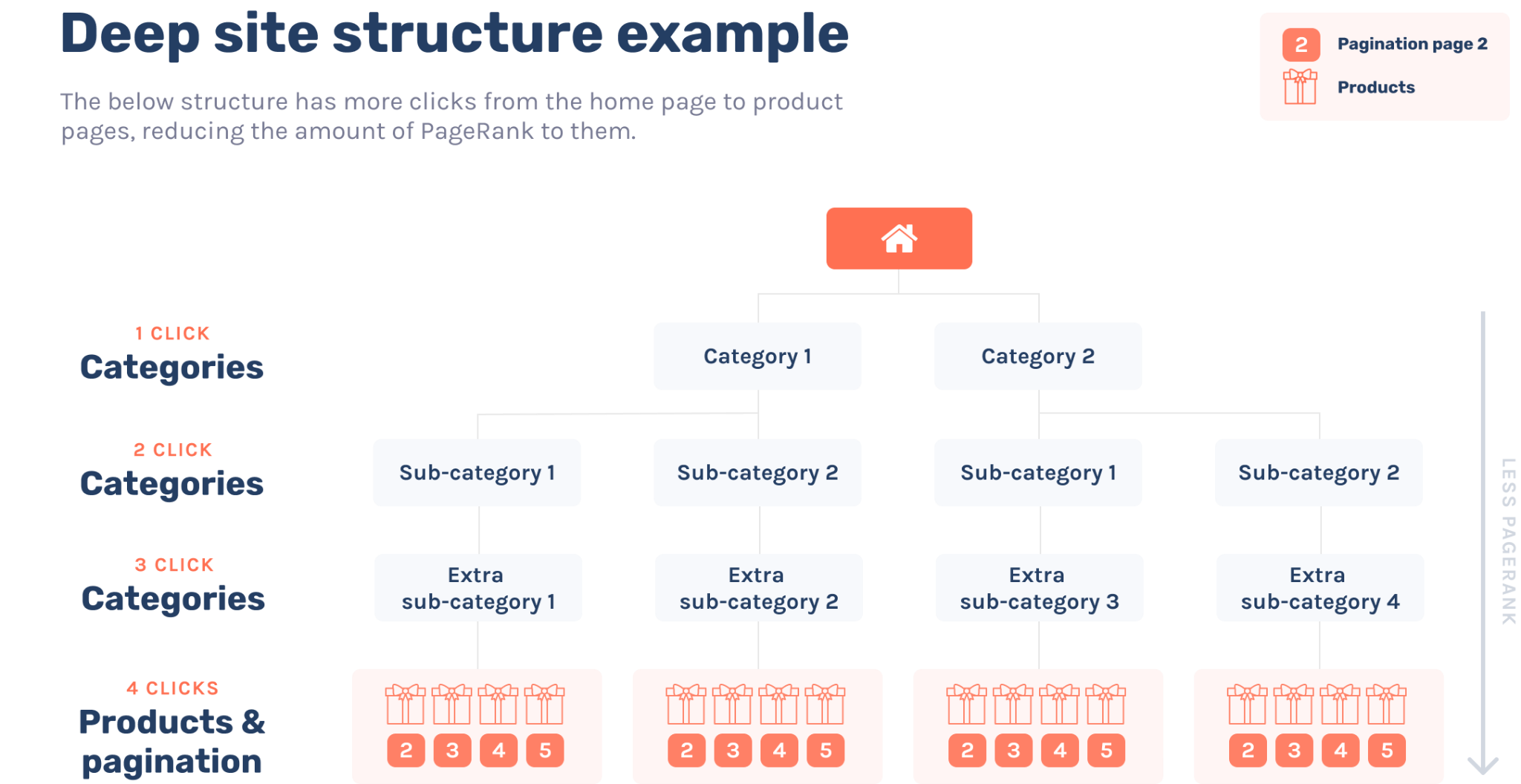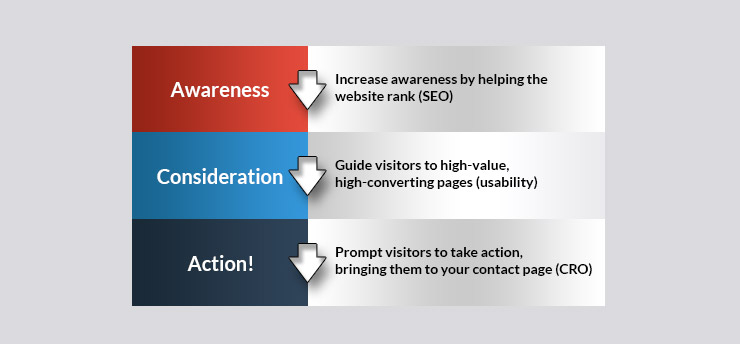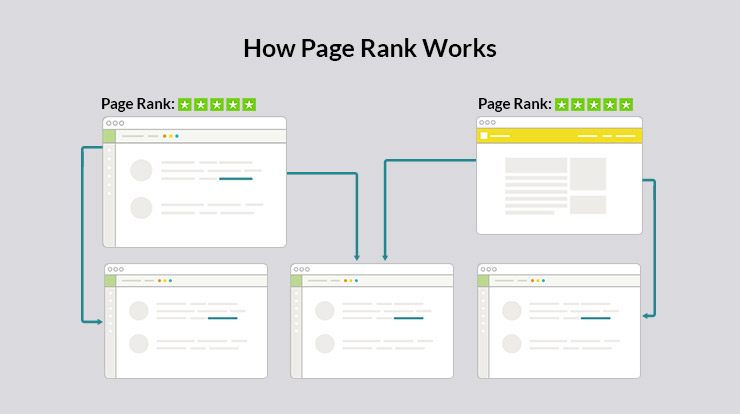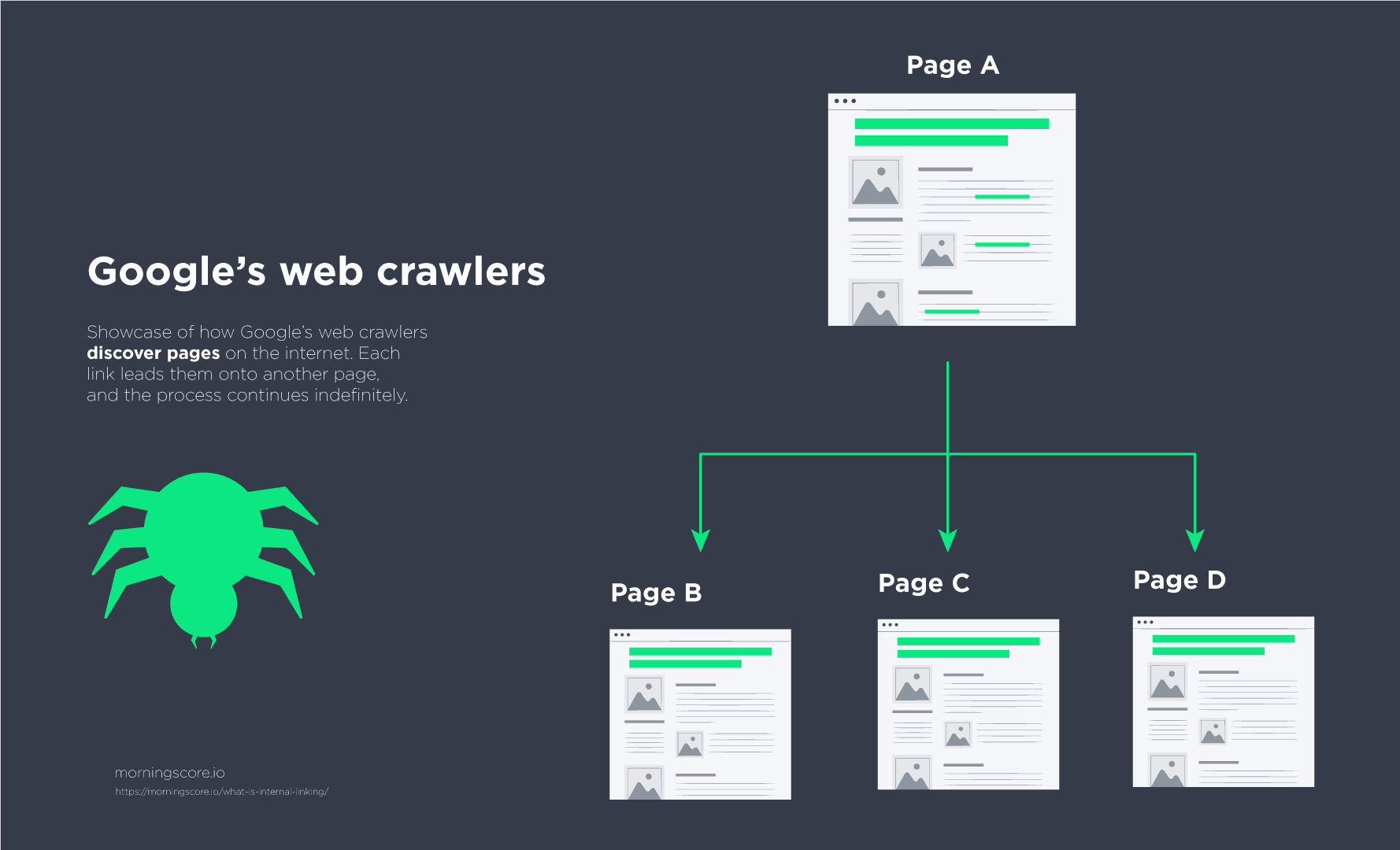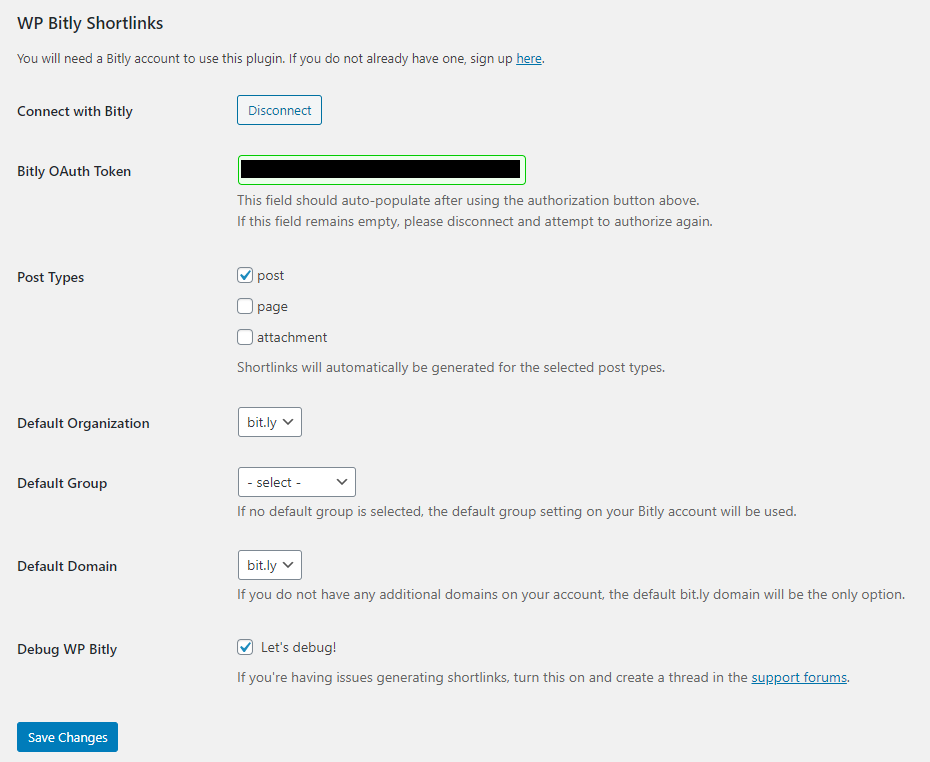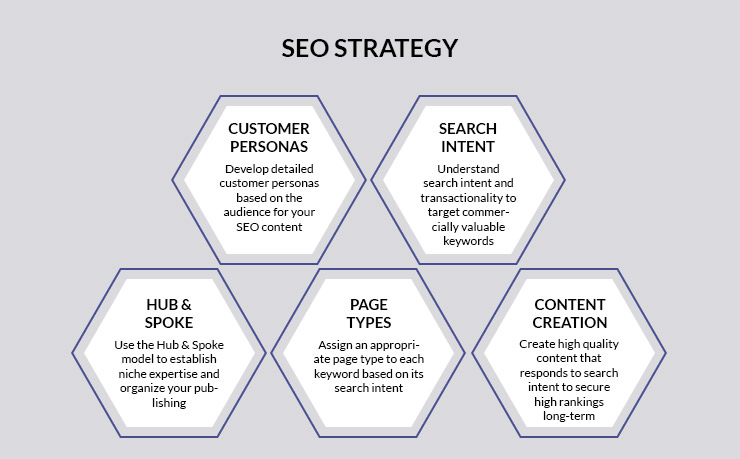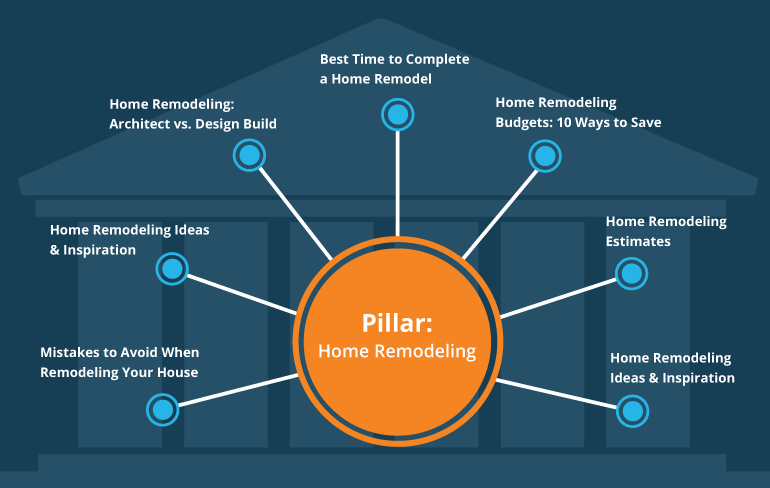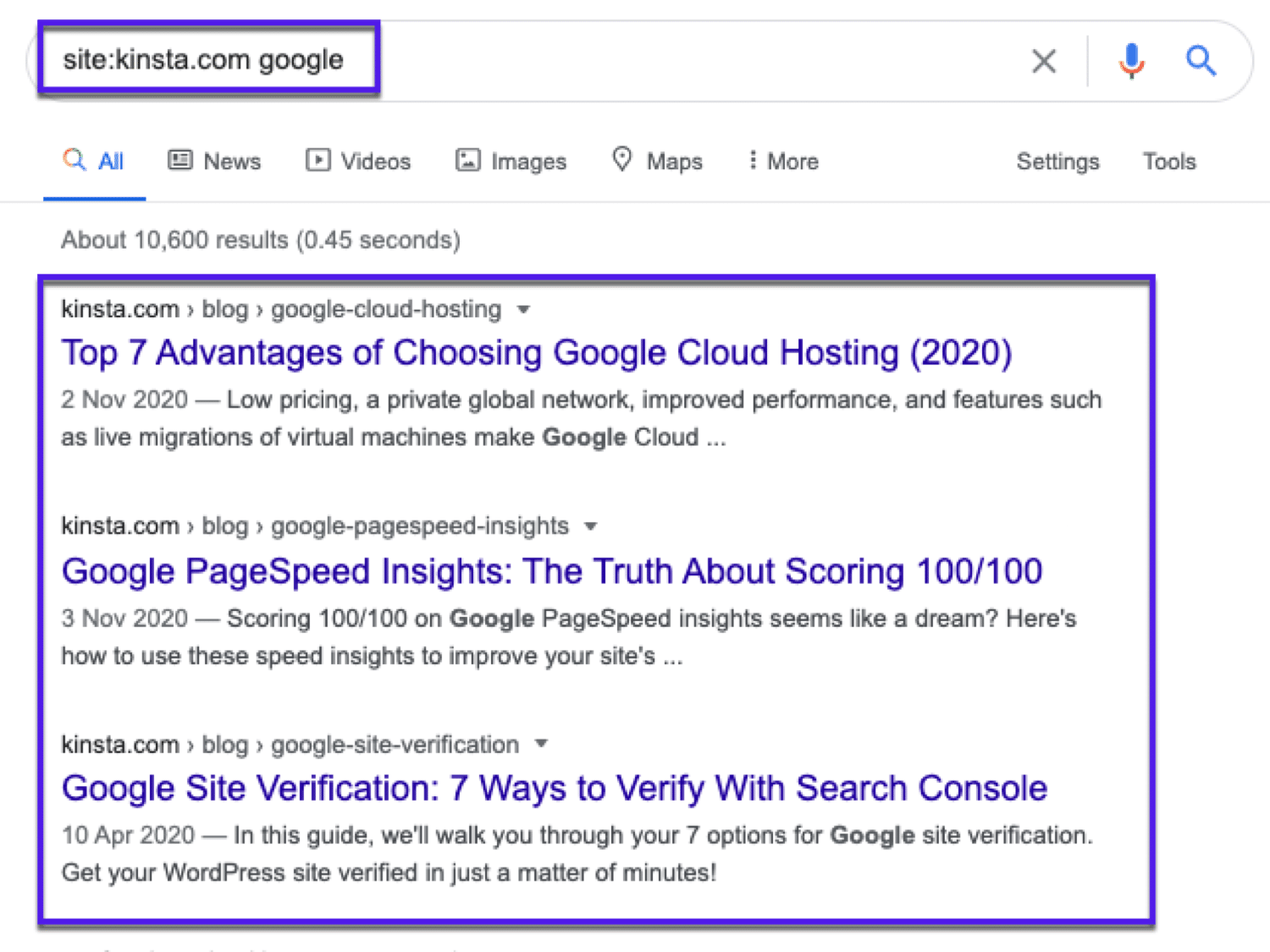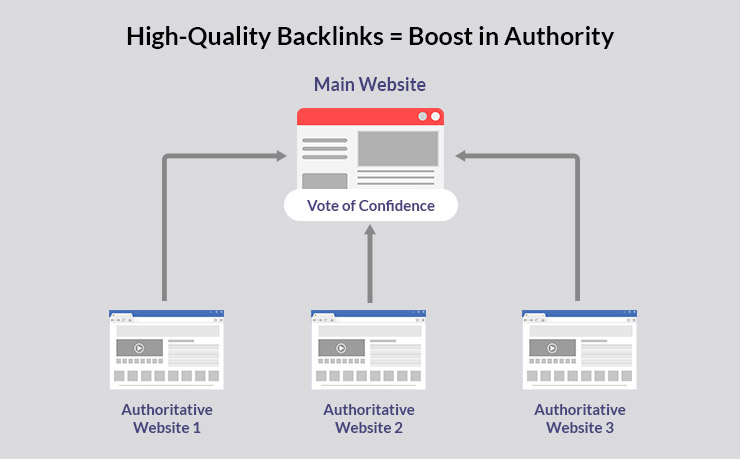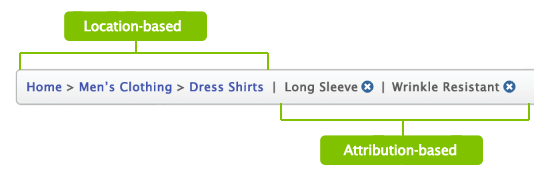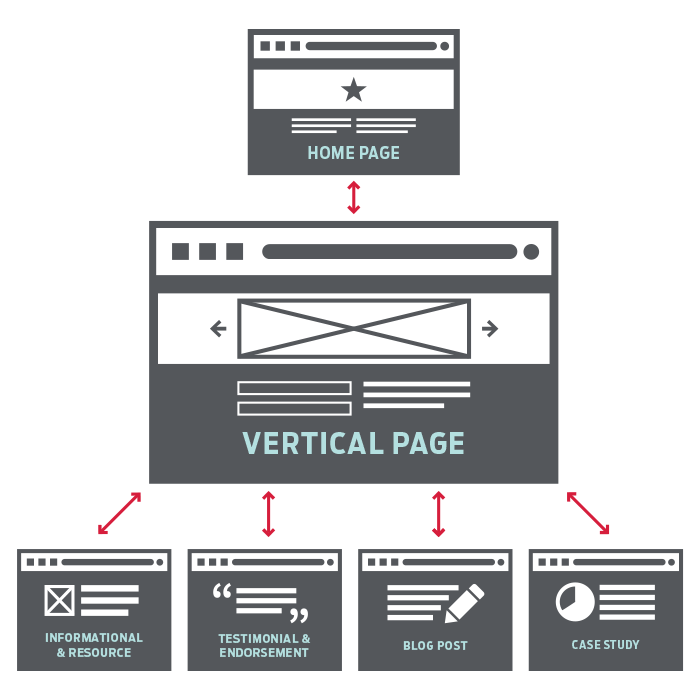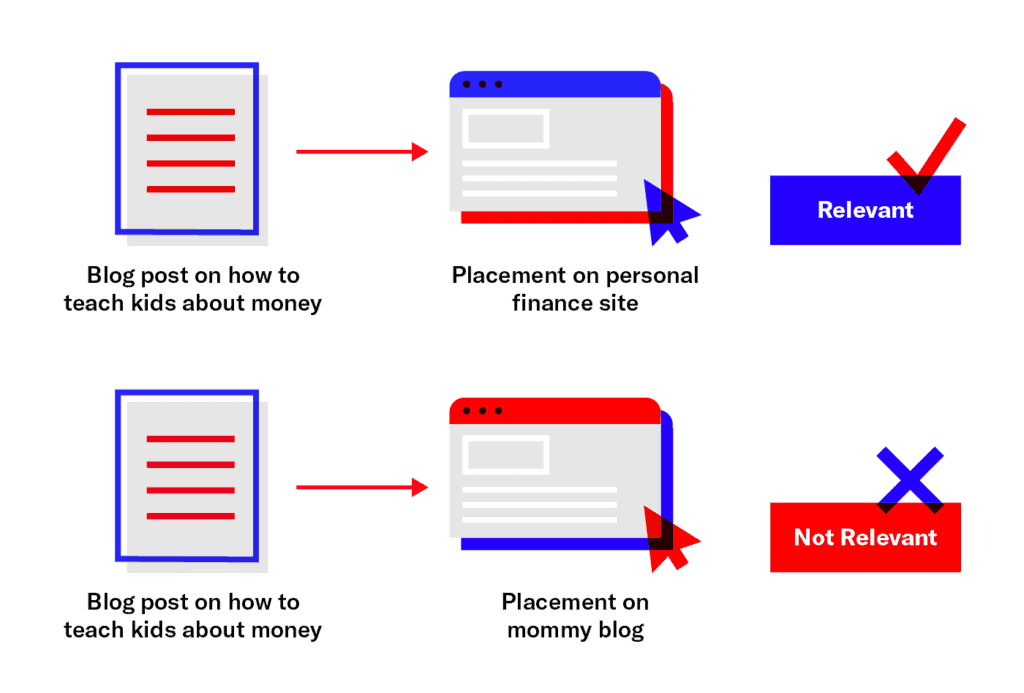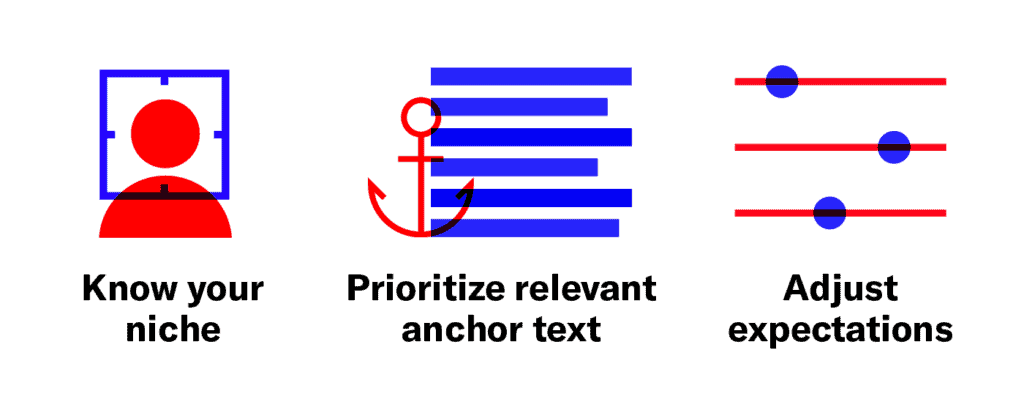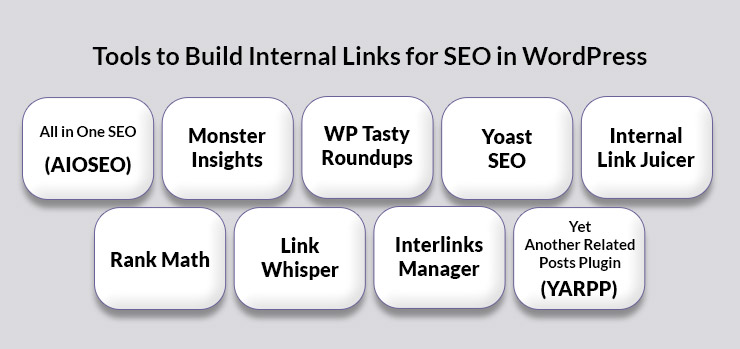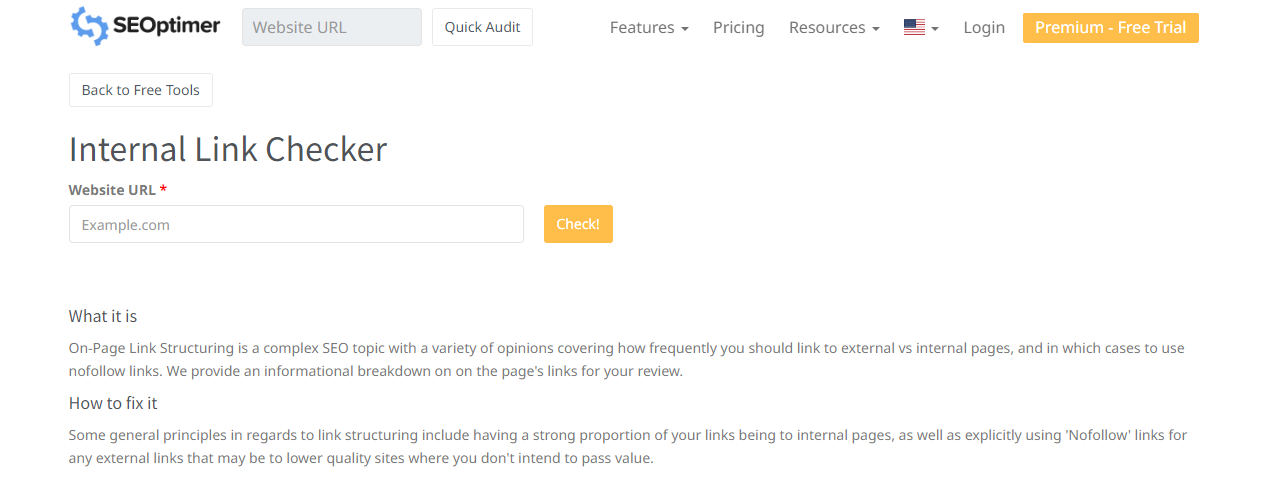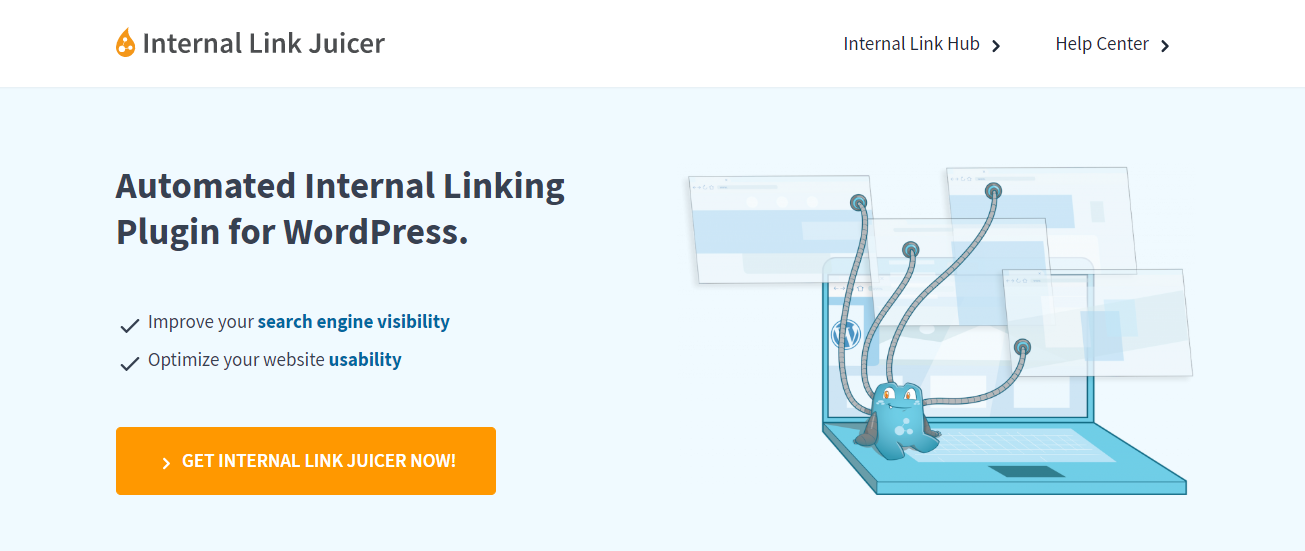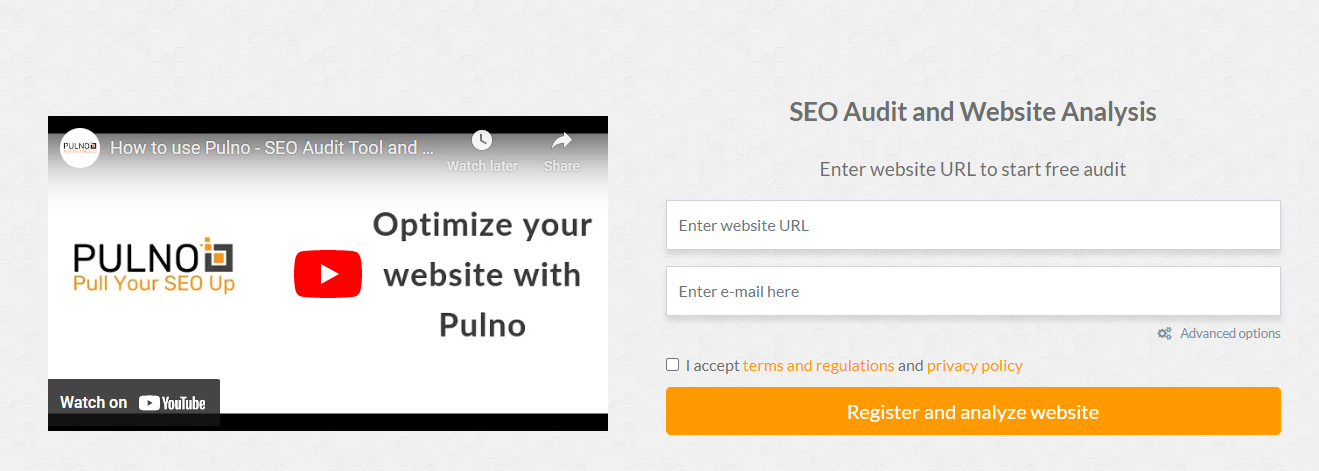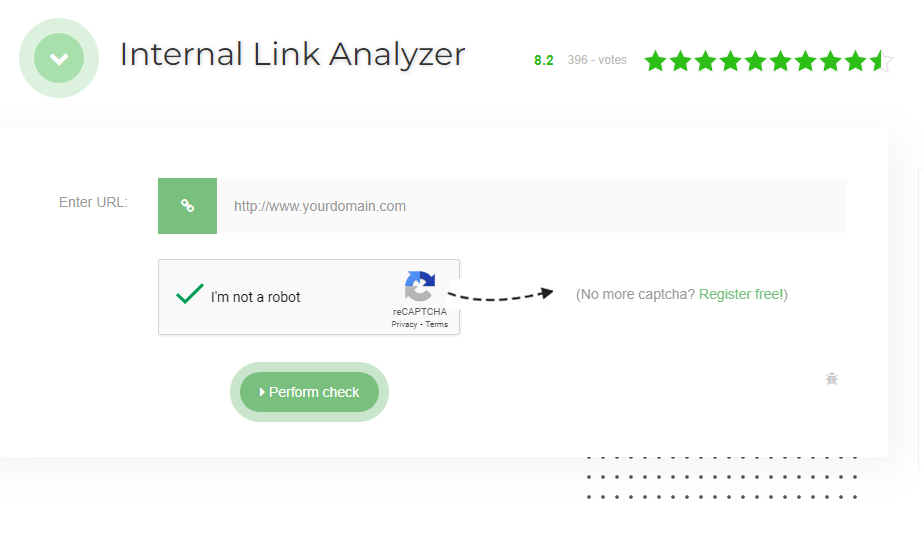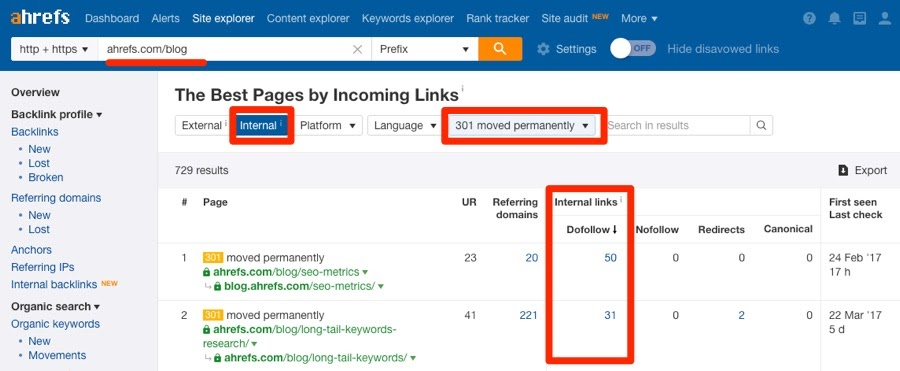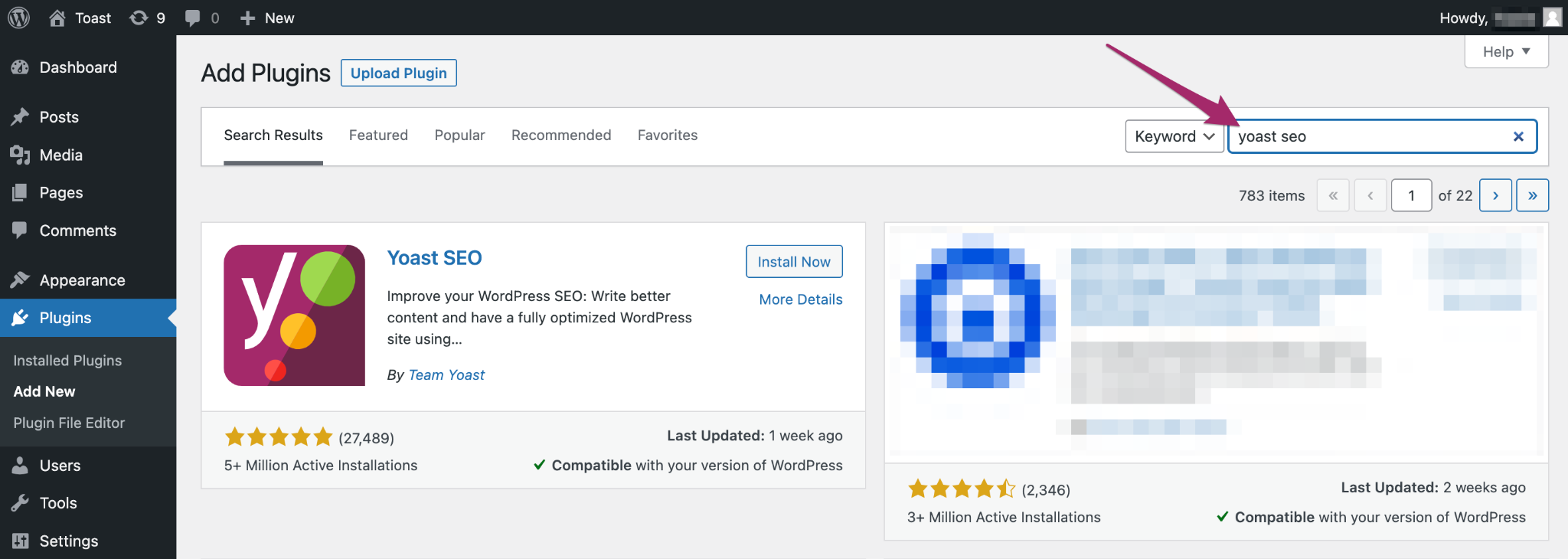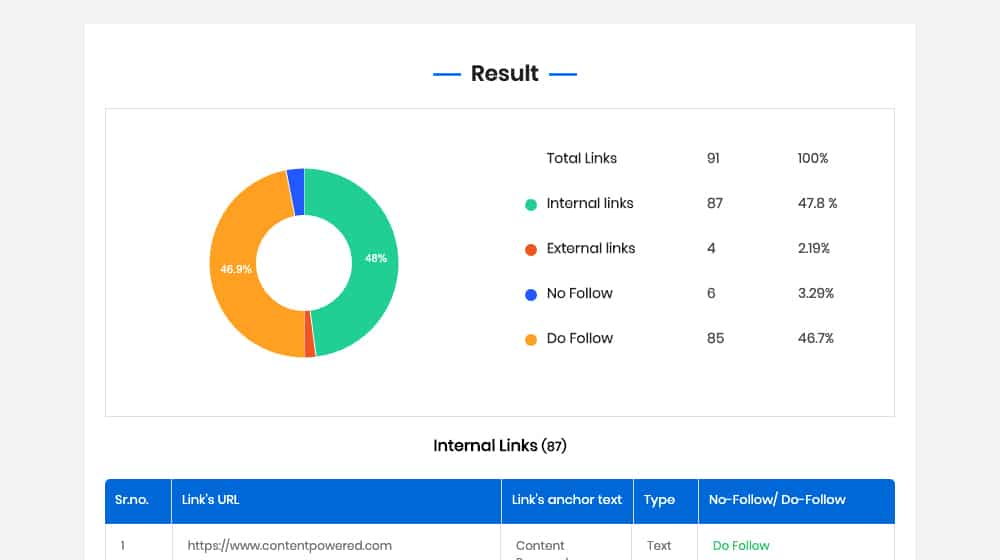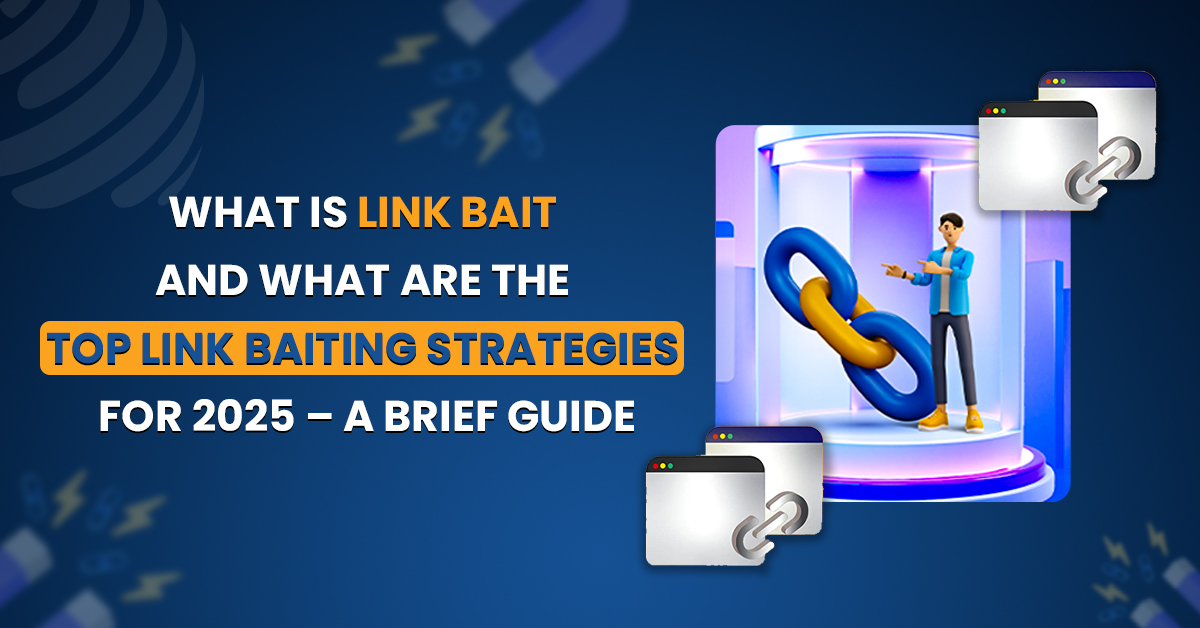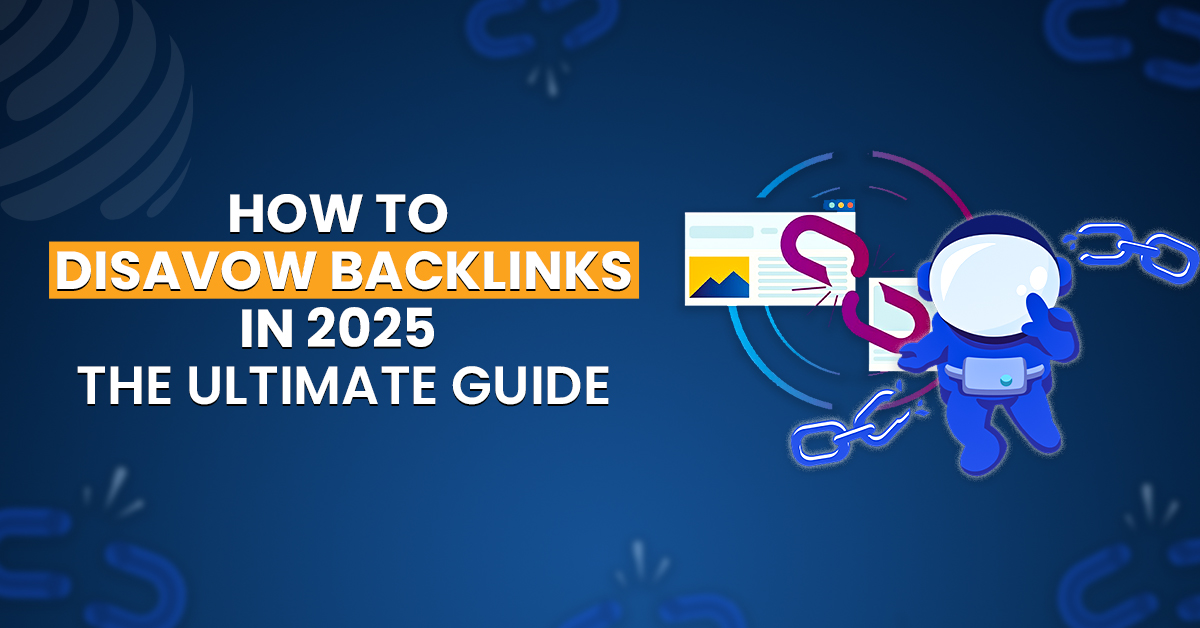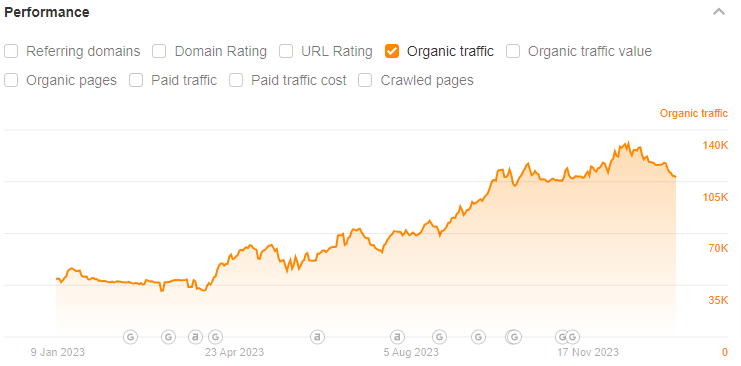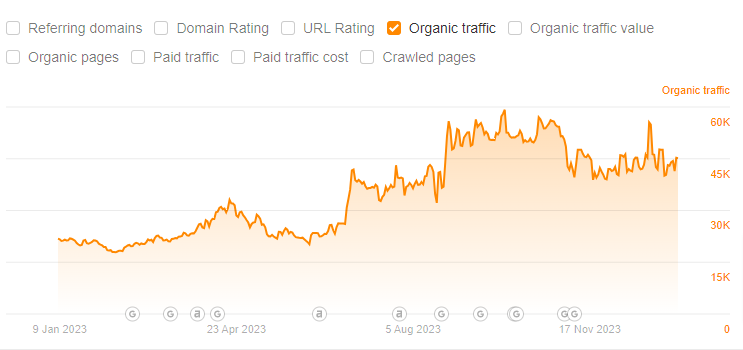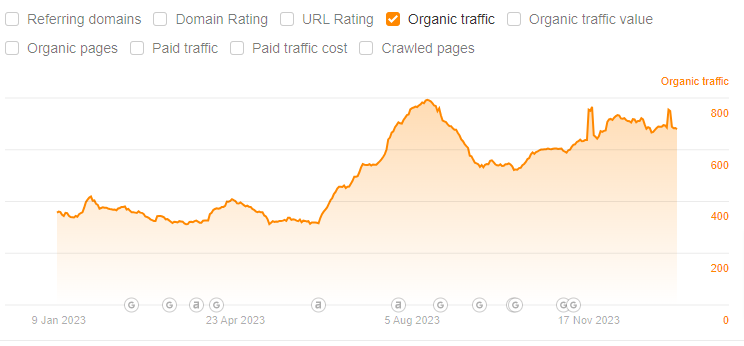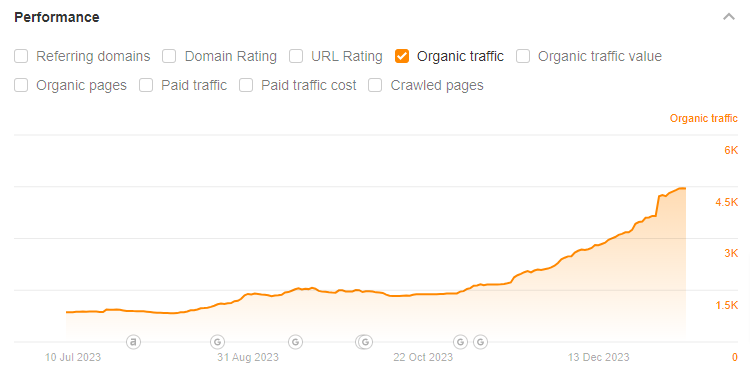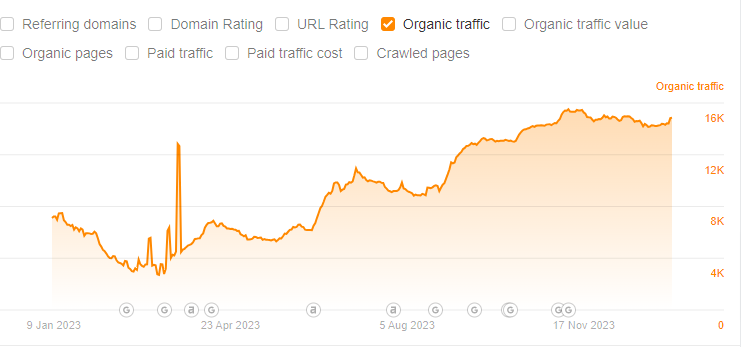Internal links are votes you need if you want to rank. As simple as that! However, the question stands:
How to do internal link building in a way that it works?
While most website owners and marketers understand the importance of internal linking as part of an overall SEO strategy, it is frequently overlooked.
Experienced digital marketers and webmasters, on the other hand, never overlook internal linking.
Why?
Because internal links are necessary for increasing the visibility of external links by providing an increased volume of long-tail keywords, better visibility by generating organic traffic, and by offering a better response to users’ queries.
Keeping that in mind, the more votes you have in the form of internal links, the higher chances you have of higher rankings.
Source: SEO Clarity
So, let’s not waste any more time and learn how to do internal link building:
What Are Internal Links?
Internal links are hyperlinks linking to subpages in a domain to help the user with navigation from one web page to another web page in a website. Internal links allow marketers and webmasters to disperse their homepage linking power across directories evenly.
While the majority of SEO experts use internal links to navigate through a website, they can also help readers access more content on a website through related articles or pages.
Source: Reliable Soft
Internal links, as opposed to external links, keep your readers on your website. However, do not confuse them with inlinks, which are links from other domains pointing to your website.
Lastly, contrary to backlinks, internal links can be placed on single keywords using an anchor text. The analysis and improvement of the internal link structure is a part of on-page optimization within search engine optimization.
Types of Internal Links
Before we move on to our question, i.e., how to do internal link building, let’s have a look at all the different types of internal links to exist:
Navigational Links
Navigational links are permanently displayed on your main menu. Therefore, navigational links are the most important internal links. They also serve as the primary navigation structure for your website.
Navigational links are frequently seen in the top menu or sidebar. They cover primary content subjects, including product categories and services.
Here’s an example of how they might appear to your user:
Source: Loganix
They are frequently applied site-wide and serve the main function of assisting users in finding what they are looking for.
Breadcrumbs
For anyone who is confused thinking what a breadcrumb is, well, it isn’t something you eat.
A breadcrumb, in reality, is a simple navigational feature on a website. It is placed near the top of a web page, and it shows where you are present in terms of a website hierarchy.
Here’s an example of what a breadcrumb might appear like:
Source: SE Ranking
It is not necessary for users to find breadcrumbs on every website. You’ll notice that breadcrumbs are the least used kind of internal links because, normally, websites prefer simple architecture. However, breadcrumbs are more on the complex side of it. Still, you will see ecommerce sites with tens of hundreds and thousands of product pages using breadcrumbs.
Footer Links
Footer links are a sub-type of navigation links. They are found on every page of your website. However, they are placed at the bottom of the page rather than the top. Footer links should direct the visitor to other web pages on your website that they may want to see.
Here is an example of what a footer link might look like to your visitors:
Source: Search Logistics
Some common examples of footer links include reference pages, the Frequently Asked Questions page or section, the about us page, and the contact us page.
Next or Previous Links
These links direct visitors to your website. They allow them to smoothly browse back and forth within your web page. Next or previous links come in handy and are highly significant link tags when it comes to developing powerful site-wide navigation.
Source: WP Beginner
Sidebar Links
Sidebar links are also considered another subtype of navigational links. These types of links are employed by some websites to connect viewers to relevant material. Many news websites or recipe blogs include these types of links to encourage their readers to go to a linked page on the same website.
Source: LIS
Image Links
This might come off as a surprise to a lot of people, but images can be used as internal links as well.
Some very common instances of images being used as links include infographics, button images, and charts. Image links can help readers if there is a web page on your website that can help people looking for more information on an image used in your content.
Bookmarks
Bookmarks are another type of internal link. You might have heard about them but under a different name. They are also called anchors. Bookmarks refer to a specific portion of a given web page. Bookmarks save time for both the user and the browser when a user scrolls a website, which is especially important for web pages with particularly long URLs.
Source: Screaming Frog
Categorical and Taxonomy Links
These links connect important web pages, such as related posts or blog categories, on a website. The purpose of taxonomy internal links (or categorical internal links) is to help visitors find content more easily. They can also direct users to parent service pages through links.
Contextual Links
Contextual links are also commonly known as in-text links. These links are typically located in the main body content of an article, blog, or web page. Contextual links serve the purpose of directing people to related content on a website instead of directing them to larger navigational pages.
A contextual link in a company’s blog or about us page can look something like this:
Source: Sir Links A Lot
The links are frequently embedded in descriptive anchor text. Contextual links are frequently used in blogs and articles to direct visitors to related, relevant information and to assist Google in understanding how your website’s web pages relate to one another.
Text Links
Text links are phrases or keywords that are hyperlinked within your blog’s content. The text link is usually formatted in blue and may have underlining.
This is the most common sort of link for a search engine optimization (SEO) strategy that includes internal linking.
Here is an example of what a text link can look like to users:
Source: Setup Ad
Benefits of Internal Link Building In Seo
We know everyone wants to know how to do internal link building. However, what’s even more important is to find out why you need to work on effective internal linking strategies In the first place.
Let’s find out, shall we?
Internal Linking Improves Usability via Relevant Anchor Text
Source: Terakeet
Internal linking makes it easier for visitors to navigate your website. More so, it also improves usability by using appropriate anchor text. This comes in handy when you are experiencing how to do internal link building. You have to make sure that your anchor text is related and relevant to your content that may be of interest to your target audience.
For example, if you are writing a guide on SEO mistakes and you have another article on the solutions, you can redirect your audience to your other articles. Those articles should have the solution to a specific issue in more detail. The key here is to make sure that your anchor text is relevant and keyword-optimized.
Plus, using various anchor texts on different pages also increases usability by preventing any duplication.
Enhances the User Experience
When it comes to how to do internal link building, Search Engine Optimization is not a one-size-fits-all approach. There is far too much to think about with RankBrain, Hummingbird, BERT, and other Google updates. That is why marketers’ emphasis has shifted to improving their website’s user experience.
Source: Authority Hacker
Internal links are super important to curating a seamless online experience for users. They allow your readers to delve deeper and learn more about a specific topic of interest.
Another way you can utilize the complete perk of internal linking is by linking your articles by applying them as “Recommended Reading.” This way, you can indicate to your reader that your website has additional information to help them understand the topic better.
Source: Content Marketing Institute
These links enable your readers to continue to expand their knowledge on areas of interest to them. If you’ve ever gone into a Wikipedia rabbit hole, you’ll understand what we mean.
Internal Linking Spreads Link Juice
Despite the fact that external linking and obtaining do-follow backlinks are important for increasing domain authority, you cannot ignore the importance of internal links SEO best practices. Internal linking can help distribute link juice to other web pages or blog posts on your website.
Source: 5 and 3
Internal page links help to spread the link equity on a website. To take advantage of this perk, you must first grasp how link juice travels to your most crucial landing pages via internal linking.
Nothing Can Match the ROI of Internal Linking
Do you know how Amazon and other giants like Alibaba have made themselves rule the first results on tens of thousands of keywords? They used internal linking best practices!
Most major e-commerce websites can rank themselves based on the keywords that directly target their customers’ queries by using appropriate keyword suggestions. As a result, they improve the chances of their products being discovered by search engines.
If you use a similar technique, you can easily create hundreds and thousands of internal links. Each link should correspond to your potential customers’ requests.
Source: Siege Media
Apart from any internal link tips and strategies, the automated and intelligent application of internal links significantly improves the positioning of a web page.
In addition to the ranking, if you are running an e-commerce website, the automation of internal linking will be very important in acquiring a very significant ROI.
Internal Linking Makes Search Engines Understand Website Structure
Internal linking makes search engines aware of how the internal sites on your website interact with one another. Furthermore, it also tells them which pages are more significant than others. The website structure also makes it easier for search crawlers to understand and traverse the website.
Source: Sam Underwood
For example, the more you work on your website’s internal linking structure, the more chances you have to rank. Internal links show search engine bots which pages on your website are important to know which pages are important and must be shown on the search engine result pages (SERPs).
Internal Linking Drives Users Toward Conversion
Another one of the most important benefits of internal link-building in SEO is that it increases the possibility of conversion.
How does it do that?
When you use effective internal linking strategies, you improve your website’s user navigation. As a result, you drive your target audience toward a sale (conversion).
n other words, links on your website’s homepage help with content marketing. On the other hand, the blog posts in your website’s structure show your customers the way to a product page, gated content, or a free trial.
And just like that, your readers go through the stages of awareness all the way to becoming loyal customers.
In order to build an internal linking network that improves the rate of conversion, you need to look at your website through the lens of your buyer’s journey.
Internal Linking Raises Pageviews
Internal linking also skyrockets pageviews. For example, if your blog posts are connected to each other through hundreds of internal links, readers will be more likely to scroll through your website. As a consequence, they will spend a lot more time on your website. This strategy improves a website’s conversion rate.
A longer session length and a larger number of pageviews on every visit imply a better user experience (UX). And, as we’ve seen with the Page Experience update, Google takes user experience into account when ranking web pages.
An Internal Link Building Strategy for SEO Also Improves Crawl Efficiency
Search engine crawlers have a very simple working pattern. They have automated algorithms that crawl the web on existing and new domains. When they come across your website, they look for code for SEO ranking factors on all the pages.
Whatever information they find becomes a part of your website’s index. That index determines whether your website will appear in search results and how it will do so.
Source: Morning Score
Now, here comes the interesting part, these crawlers also check out the website’s external links and internal links. Plus, they also look for updated and new content. A strong and strategic internal linking network improves the crawler’s efficiency. So, you get better chances of getting indexed and ranked!
How to Use Internal Links to Rank Higher in Google?
Let us show you how to do internal link building by using the best internal link tips and strategies:
Install a WordPress Plugin to Find Internal Links
If you do not want to use Google to identify internal links to add to your blogs, then go for a WordPress plugin.
Source: WordPress
When publishing an article, determine a probable ‘anchor text.’ Set up your WordPress Plugin to detect whenever your anchor text appears in other blog posts. You can also change your plugin’s settings to avoid repetitions.
Make Sure SEO Is a Part of Your Content Strategy
When you maintain SEO at the forefront of your content marketing strategy, you end up producing content that is great for internal linking.
Think about your customers, their pain points, possible solutions, their searches, keyword intent, and the journey they take from awareness to conversion.
Publish content that addresses your audience’s needs while anticipating their evolving questions as they move through the sales funnel. Then, strategically place internal links to pique their interest just as they’re about to ask the next question.
Pillar Pages and Topic Clusters Are Your Best Friends
Topic clusters are groups of connected articles that cover expansive ideas. Each group contains one pillar page and several cluster pages that support it. Topic clusters work wonders when you are learning how to do internal link building by applying internal link-building hacks because they create hubs of related content.
Source: Neil Patel
Each pillar page is linked to other detailed blog posts about different subtopics from subheadings (H2s, H3s, H4s, etc.). These linked blogs are the cluster pages that are linked to the main pillar content in return.
Topic clusters enable you to show your content’s expertise and depth to Google. More importantly, they establish your content into bite-sized subtopics, which is exactly what Google is investing in at the moment.
Use Google to Look for Internal Links
Using Google’s site search operator to uncover similar material on your website is another effective approach to finding internal link-building opportunities.
For instance, if you search for the site:kinsta.com ‘WordPress hosting’ using Google’s search bar, it will return all pages on the Kinsta domain that talk about WordPress hosting.
Source: Kinsta
You can then amend these pages to incorporate a link to the new page, assisting search engines in discovering and indexing it while also transmitting value to aid in ranking.
Do Not Forget Your Product Pages
Internal link your product pages as well. Be it a single product or a whole section about different options of a product.
This approach can drive a lot of traffic to your website because it helps the customer journey and passes link authority between pages.
Gets Links From Authoritative Pages
This does not have to be as hard as people make it out to be. You just need a tool like Ahrefs or Moz to determine the relative authority of all the pages on your website according to their backlink profile strength.
Do not waste your time on PageRank. Just ensure that you add internal links to pages with plenty of backlinks. The more backlinks a page has, the more internal links you can add without diluting the quality.
Long Breadcrumbs Can Work Wonders for You
An internal linking strategy that has worked wonders for people in terms of traffic is using long breadcrumbs, especially for product pages and subcategories.
Long breadcrumbs increase rankings for keywords related to subcategories because of higher internal linking across more pages.
Source: Tubik Blog
You just have to make sure your anchor text is targeted to specific keywords whilst minding the design of the website as well.
People-First Approach Works the Best
Follow a people-first approach when it comes to internal linking. Create an internal link building strategy that uses applicable search phrases.
However, do not force it. If you are using a phrase just for SEO purposes, it will look like spam to your user. Keep your users first, always.
Insert Keywords in the Anchor Text
Contrary to popular belief, Google does not penalize a website because it has linked to its own content using keyword-driven anchor text.
Source: Moz
After all, you own the website at the end of the day. You can do whatever you want. However, make sure that your keywords are not placed unnaturally if you’re building backlinks from other sites.
As long as your anchor text and internal links make sense contextually, don’t sweat it.
Try Page-by-Page Interlinking Analysis
We recommend sticking to page-by-page internal linking analysis to help Google recognize keyword-focused content on your site.
Source: Gravitate Design
Start by determining the number of internal links that your top-ranking competitors are using. Make sure that your website is in line with your competitors. Next, you can use a tool like SEMrush or Ahrefs to include semantically related keywords in your anchor text.
Internal Link Pages With Lower Traffic in High Traffic Driving Web Pages
When you publish new blog posts, sometimes webmasters fail to provide them with the initial juice they require in order to rank higher. So, whenever you publish a new blog post, look for older posts to add internal links.
This helps all new and old articles by giving them internal links directed to them. As a result, it helps them rank faster and higher in search engines.
Relevance Is More Important Than Location
When learning how to do internal link building, a lot of people make the mistake of not prioritizing relevance over location. Do not be one of those people!
Unnaturally stuffing as much as possible reduces usability and trust. Would Google use a harmful ranking signal? It’s unlikely.
Source: Siege Media
So, what should be your approach?
Keep your users at the forefront and add links to the most relevant anchor texts in your article. Link your content to relevant pages via broad match anchor text.
Ensure that your subheadings are full of highly relevant context about topics related to your links. Context rules in the world of content writing. So if you are writing on SEO and you have a section about its importance, that is the best place to internally link a blog post about SEO ROI.
Source: Siege Media
How to Build Internal Links for SEO in WordPress?
You can apply effective internal linking strategies for SEO in WordPress by yourself, or you can use a tool. Besides, you can hire a professional if you do not know how to do internal link building.
Here’s how To Build Internal Links for SEO in WordPress by yourself:
Navigate to Your Post
First of all, you need to find the blog post or the web page on which you want to apply your internal link building strategy for SEO.
Once you have found the post you want to add Internal Links, click on edit the post.
Here’s how this step will go:
WordPress Dashboard > Posts > All Posts > Edit.
Highlight the Text to Add the Link
Select or highlight the text to insert the internal link to it. This step is done in the post-editing screen. Click the link icon in the post-editing screen and paste the internal link that you had copied earlier.
If you’re a little confused about which post you should link to, simply add a keyword, and WordPress will scan your website for suitable content to link to. Then, simply click on the blog post or web page to which you want to link, and voila!
Update or Publish Your Post
After you’ve added the internal link, click on the Update option as you would do when updating your posts on a normal basis. Or if you have just created the post and you wish to see the changes, then you need to Publish the post. The internal linking will then appear in your post. Clicking on any of the internal links will take you to that specific post.
And that’s how to build internal links for SEO in WordPress.
However, this is the manual way. If you want to automate the process, you can use tools. You can also use some plugins to build internal links in WordPress or better Search Engine Optimization. Some greats that you can try to make internal link-building hacks come to life include:
- All in One SEO (AIOSEO)
- MonsterInsights
- WP Tasty Roundups
- Yoast SEO
- Internal Link Juicer
- Rank Math
- Link Whisper
- Interlinks Manager
- Yet Another Related Posts Plugin (YARPP)
How to Find Internal Links to a Page?
If you want to know how to find internal links to a page, you will have to learn how to use internal link building tools.
Yes, that’s right!
You will need to use internal link building tools to find the internal links on a web page. Internal link building tools are a wonderful approach to identifying any problems with your website’s hierarchy and linking structure. These internal link building tools can also help you come up with ideas for improving your internal link building strategy for SEO.
While there are plenty of options available in the market, it is vital that you select the tool that best meets your requirements.
Here are some of the tools you can use to look for internal link opportunities:
Internal Link Checker
Source: SEOptimer
Internal Link Checker is an app that you can use to locate internal links on your website. This is one of the simplest solutions because all you have to do is enter your website’s URL, and the Internal Link Checker will do the rest.
Internal Link Juicer Pro
Source: Internal Link Juicer
Internal Link Juicer Pro is a feature-rich WordPress plugin that lets you easily identify, manage, and create internal links for your website. This plugin, in addition to automating internal link-building, also customizes your internal links, establishes link targets, and even controls your website’s link equity.
Pulno
Pulno is another tool made for website audits that allow its users to check their website for multiple issues. These issues include but are not limited to duplicate and broken links.
Source: Pulno
It is easy to use because it provides a lot of data in one place. So you do not have to do a lot of work.
Internal Link Analyzer
Last but not least, we have the Internal Link Analyzer for you. This is also an auditing tool that allows its users to scour their website for internal links.
Source: SEO Review Tools
The internal link analyzer is a little more comprehensive and complex as it also provides other metrics such as sitemap, number of external links, the most linked pages, number of internal links, and so much more.
If you want to know more about internal link building tools, we have a separate guide on them. Read it here!
How Many Internal Links per Page SEO Do You Need?
The ideal number of internal links pointing back to the content for the majority of websites and the majority of pages on those websites should be close to 20. This statistic, like everything else connected to SEO, will change significantly based on the size of your website.
Source: Ahrefs
However, you can make things easier for yourself by using internal link building tools. SEMRush, for example, has a plethora of resources that users can utilize to examine a website’s complete link architecture. You can acquire a concise internal linking score that provides you with an overall target to aim for while also offering a series of ideas for how to increase your website’s score. A high linking score signifies an excellent link profile.
So, that is a win!
Yoast SEO and its integration with WordPress is another option that you can try out. It offers an accessible approach to performing a variety of SEO activities. It allows its users to identify which areas of their websites have the greatest impact on their organic results. If you don’t believe anyone else about how crucial internal links are, you can trust Yoast. You can use Yoast SEO to find out how many outgoing and incoming internal links your blog entries have.
Source: Yoast SEO
As you become more familiar with your link configuration, you will notice a pattern in your link-building strategy. This pattern is known as the hierarchy.
Source: Content Powered
You can use tools like Yoast SEO and SEMrush to learn more about how many links your article, web page, post, or content should ideally have, as the quantity varies depending on the word count and the topic.
What to Do if You Can’t Use Internal Links SEO Best Practices?
We all know that the perks of learning how to do internal link building are far-reaching. In addition to that, a strong backlink profile is the most potent internal link building strategy for SEO you can use to boost your website’s rankings.
That being said, learning how to do internal link building and spending your time and money on it is not an easy venture. Therefore, if you find yourself in a similar position, you need to have a backup plan.
What’s the best way to go on about it?
Get a professional to do the job for you.
Delegate the Task to a Professional
Do not be like other people. No matter what happens, do not turn to black hat SEO strategies. These strategies have proven time and again that they will hurt your website’s rankings instead of helping them. Plus, you can also get caught up in the confusion of building backlinks if you do not know how to do internal link building. For instance, you might mix up nofollow and dofollow links.
However, worry not!
It does not matter if you are unaware of the intricacies. Here at Globex Outreach, our team of link building professionals makes sure that you are able to decipher the complicated game of internal link-building hacks. Through their years of experience and our link building services, sourcing high-quality links for your website will look like a piece of cake.
Summing It Up
If done correctly, internal linking can create a web of useful connections between your content and your niche. As a consequence, your readers will be able to dig deep into your website. They will, ultimately, discover what they need far beyond the article they landed on.
Plus, do not forget that internal linking is also super important from a technical perspective. So, if you are thinking of giving in and learning how to do internal link building yourself, you are on the right track!
Internal linking strategies can assist you in reducing broken links and redirecting them while also increasing site authority. Despite some limitations, internal links are a tiny but powerful approach to boost your content marketing program even more.
Long story short, internal link building must be a pivotal part of your SEO strategy.

